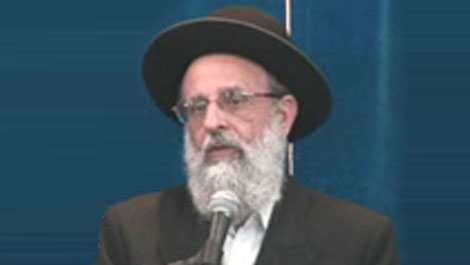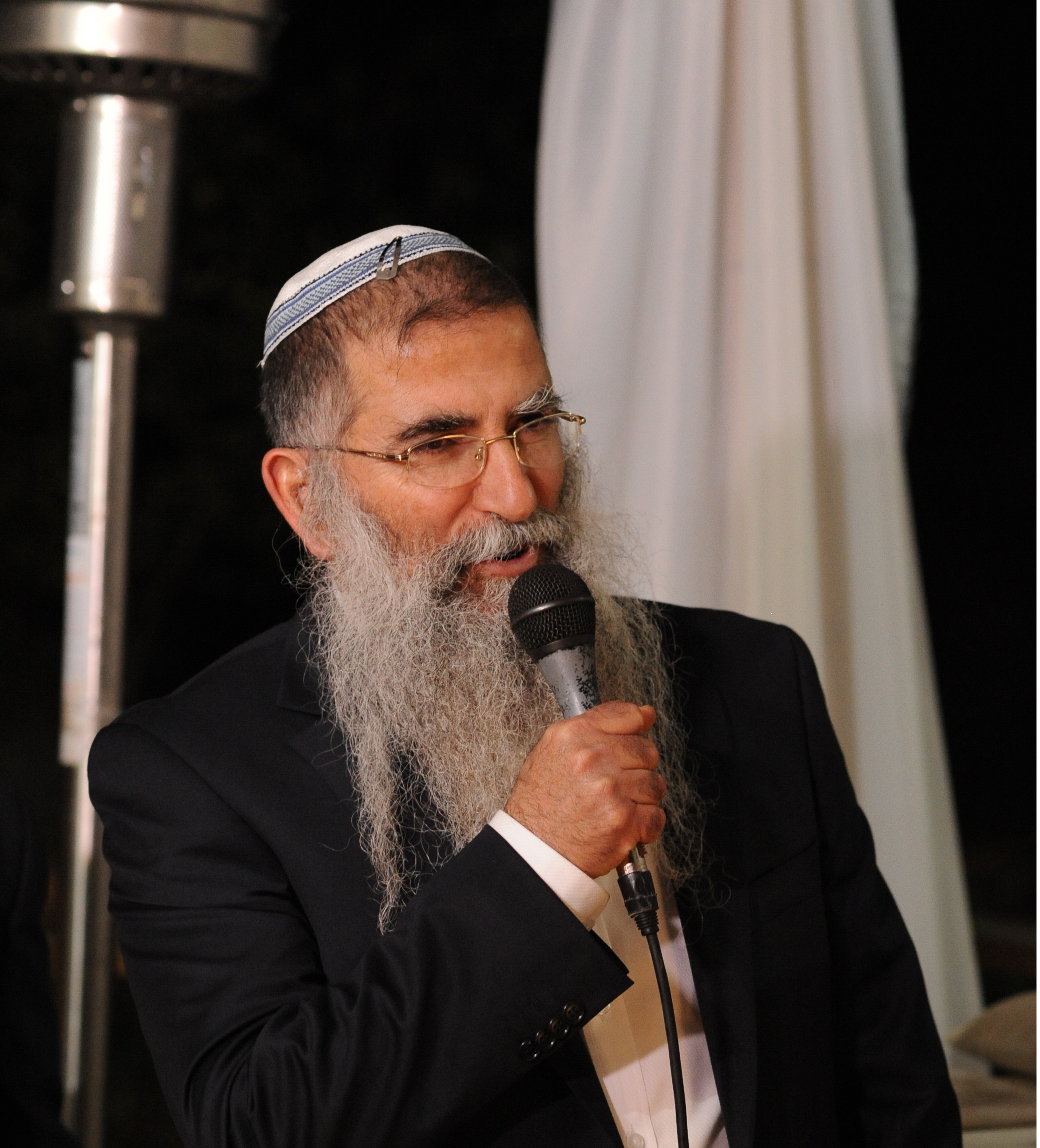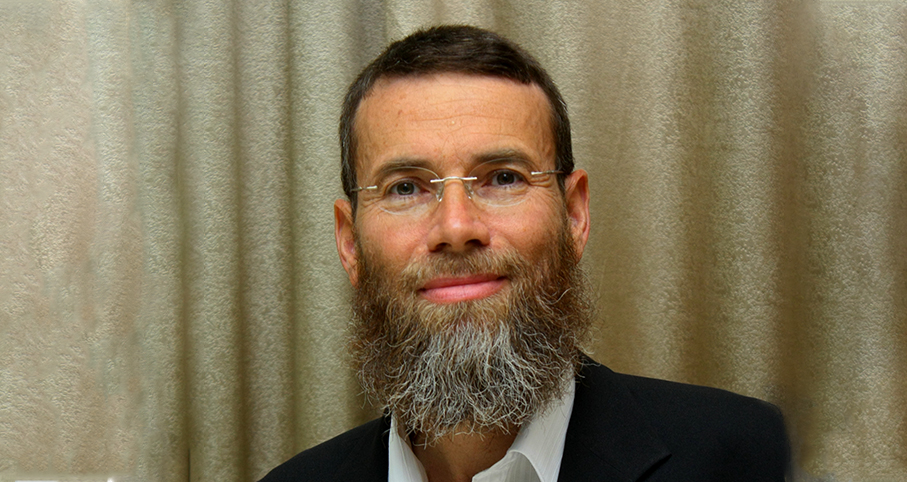Beit Midrash
- Shabbat and Holidays
- Rosh Hashana
- Shofar Blowing
2. More on the Shofar Blasts
3. Proper Intention During the Shofar Blasts
4. Various Laws
The Order of the Shofar Blasts
According to what is written in the Torah, we are obligated to sound nine shofar blasts on Rosh Hashanah. These blasts consist of three groups of three blasts each, and each group consists of a "tekiyah" blast, a "teruah" blast, and another "tekiyah" blast.
However, with the passing of time, uncertainty arose regarding the nature of the teruah blast. Clearly, the teruah is supposed to convey the sort of suffering and pain that allude to crisis and iniquity, but we do not know how this should be done. Should the teruah take the form of medium length blasts that resemble moaning, or short blasts that resemble sobbing? Or perhaps the teruah should be a combination of these, so that it begins with shevarim (medium length blasts) and continues with teruah (short blasts), like a person who starts to moan and then suddenly begins sobbing.
Because of this uncertainty, the Talmudic sage R' Abahu instituted that blasts be sounded in each of the above possibilities: we begin with three sets of three blasts in which the teruah (the middle blast in each set) consists of both shevarim and teruah; thereafter, we sound another three sets of three blasts in which the teruah takes the form of a moaning sound, i.e., "shevarim"; and we conclude with three sets of blasts in which the teruah takes the form of short blasts alone, i.e., "teruah." So, instead of the nine blasts mentioned in the Torah, today we sound thirty blasts (Rosh Hashanah 34a).
The Rambam explains that the truth is that nine blasts alone would suffice, but due to the hardships and the exiles, uncertainties arose regarding the true teruah, and because we lack the ability to reach a decisive conclusion on this matter, we are compelled to blow all three types of teruah on Rosh Hashanah, for if we leave out just one of them, we may be leaving out the true teruah, and this would mean that we have failed to fulfill our duty.
However, according to the Rambam's explanation, before R' Abahu instituted blowing in the manner mentioned above, many communities failed to fulfill their obligation to blow the shofar - and such a situation is difficult to imagine.
Rabbi Hai Gaon, on the other hand, writes that all three types of teruah are in keeping with Jewish law; therefore, before R' Abahu's ruling, it was possible for each individual to choose for himself the type of teruah he wanted to blow. He would blow nine blasts, and that was sufficient to fulfill his obligation.
What R' Abahu wanted was for the entire Jewish people to blow in a single manner, that there not appear to be a difference of opinions, and because each type of teruah is distinct and unique, R' Abahu legislated that people blow all three types of teruah, thus making room for all of the customs and versions that existed then. It follows that today, too, it is possible to fulfill one's Torah obligation with nine blasts, while rabbinic ordinance calls for thirty blasts.
2. More on the Shofar Blasts
The Torah states (Numbers 29:1): "It will be for you a day of sounding the shofar," and from here we learn of the obligation to blow the shofar on Rosh Hashanah day, not at night (Megillah 20b), The sages went further by instituting shofar blasts that coincided with the special blessings in the Rosh Hashanah prayers: "Malchuyot" (Sovereignty), "Zichronot" (Remembrance), and "Shofarot" (Shofar blasts), so that by doing this our prayers would be favorably received (Rosh Hashanah 16a).
It would appear that, at first, people would recite the special Rosh Hashanah blessings during the morning prayers and at that time they would also blow the Shofar, for "the zealous are quick to perform their religious duties." Some time later, in a period of persecutions, the adversaries outlawed the blowing of the Shofar, and their soldiers would lay in wait during the first six hours of the day to see if the Jews would try to violate the decree.
At that time they, Torah authorities ruled that the shofar be blown during the Rosh Hashanah Mussaf prayer (because it can be recited after noon) and it was likewise instituted that the "Malchuyot," "Zichronot," and "Shofarot" blessings be recited in the Mussaf prayer. And even after the enemy's decree was annulled, the Jews did not go back to blowing the shofar in the morning prayers for fear that the decree be reintroduced. This is how it became established that the shofar be blown during the Rosh Hashanah Mussaf prayer.
The Jerusalem Talmud relates that the enemies once heard Jews blowing the shofar during morning prayers. They thought it was a war cry and attacked the worshipers, killing many of them. Therefore, the sages instituted that the shofar be blown during the Mussaf prayers. Their reasoning was that if the adversary sees Jews praying and reading from the Torah, and then praying again and blowing the shofar, they will understand that the Jews are occupied with prayer and religious duties, not war cries. If, however, the shofar is blown earlier on in the day, it is not recognizable that this is part of the prayer.
Later, the sages instituted another ordinance, that shofar blasts to be sounded just prior to the Mussaf service. These blasts are called "tekiyot meyushav" ("sitting blasts") because they are not the most important blasts and therefore, according to the letter of the law, it is permitted to sit during them.
In the Talmud (Rosh Hashanah 16a) a question is raised by R' Yitzchak: "Why do we sound a tekiyah and teruah while sitting and then again sound a tekiyah and teruah while standing?" He answers that we do this "to confuse the Accuser." Rashi explains that when "the Accuser" hears how Israel cherishes the commandments by blowing more shofar blasts than required by the Torah, his accusations will be silenced.
The Ran understands "the Accuser" to be a person's own evil inclination, and by sounding many shofar blasts our hearts are humbled and we are able to concentrate better on our prayers, for it is well known that shofar blasts awaken a person to repentance. We have learned, then, that already according to the Talmud the custom was to blow sixty shofar blasts. Later on, the Mystics of Safed began to adopt the teachings of the Holy Ari, which call for 100 blasts.
3. Proper Intention During the Shofar Blasts
The sages mention numerous reasons and ideas behind the commandment of the shofar blowing, from the most straightforward (that it stirs the heart to repentance, and that we use a ram's horn in order to recall the binding of Isaac), to the most sublime Kabbalistic meditations.
I would like to mention here an explanation that contains both depth and simplicity. The Redak (Rabbi David Kimchi) explains that the first shofar blast in every order of blasts expresses the souls natural goodness, it represents the newborn child, untainted by sin, clean and pure. When the child grows, he becomes exposed to the complications and the crooked ways of this world, he struggles and is tested, he also falls and sins. This is expressed through the teruah, through moaning and sobbing over the failures that taint our character and the transgressions we become entangled in. The order finishes with a final simple shofar blast, which again expresses man's virtue and goodness, but this time after repentance, after requesting forgiveness.
Finally, at the conclusion of all of the blasts, we blow a single long blast that expresses the end of all struggles and hardships, the final rectification. The greatness of a penitent is that after sin and failure he achieves a state of consummation, as a person enriched by trials, and despite everything has succeeded in overcoming all obstacles to refine his soul. In this regard, the sages say, "In the place where penitents stand even the wholly righteous cannot stand" (Berakhot 34b).
4. Various Laws
Men alone are commanded to hear the blowing of the shofar, and this is because it is a positive time-bound commandment. Though, strictly speaking, women are exempt from hearing the shofar, almost all women make a practice of fulfilling this commandment voluntarily.
It is important to remember that in order to fulfill this commandment, it is not enough to merely hear the blasts. One who hears the shofar blasts must intend by so doing to fulfill the Torah commandment to hear the shofar. This is because we follow the opinion that commandments must be accompanied by proper intention.
It is forbidden to talk from the time the blessings are recited over the shofar blowing until the completion of the blasts, so that speech not constitute an interruption between the blessing and the fulfillment of the commandment.
If one synagogue has a good prayer leader and a poor shofar blower, and another synagogue has a poor prayer leader and a good shofar blower, it is preferable to go to the synagogue where one will unquestionably fulfill his obligation to hear the shofar blown in keeping with Jewish law.

Great Shofar, Weak Sound
based on Aroch Siach, Yamim Noraim, p. 106
Rabbi Shaul Yisraeli zt"l | Elul 26 5780

Shofar Blowing during the Silent Amida
Rabbi Daniel Mann | 25 Elul 5783

When Tekias Shofar Goes Wrong
Rabbi Yirmiyohu Kaganoff | 5768























